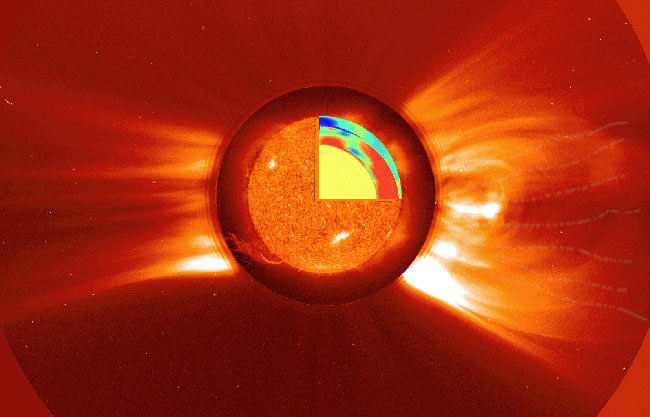Earth's Inner Temperature Taken: It's Hot!

Scientists have taken the temperature of Earth’s innards, more than a thousand miles beneath the surface, and found that the mercury there soars to about 6,650 degrees Fahrenheit.
That’s nearly as steamy as our sun, where the surface reaches 9,980 degrees.
The findings, detailed in the March 30 issue of the journal Science, will help geologists as they seek to understand how heat is transferred through the planet’s interior, which drives all geologic processes like earthquakes and volcanoes, and Earth’s magnetic field.
Vital signs
Robert van der Hilst of MIT and his colleagues examined an area beneath Central America by monitoring earthquake-generated seismic waves in real time.
The waves penetrate thousands of miles beneath Earth’s surface, effectively taking the temperature of the boundary between Earth’s core and the surrounding mantle, if you know how to read the data.
Here is how: The speed of the seismic waves indicates the chemical and physical properties of the material they encounter. By combining this seismic data with mineral physics, the team calculated the temperature at this boundary as well as above and below it.
Get the world’s most fascinating discoveries delivered straight to your inbox.
Specifically, a mineral called perovskite transforms into so-called post-perovskite at certain temperatures and pressures. The location of the core-mantle boundary, a place where abrupt temperature and pressure changes occur, can be identified by locating the exact spot of this mineral transition. The scientists' calculations put this temperature at about 6,650 degrees. Scientists estimate Earth's inner core to be about 9,000 degrees.
“What is really the important thing is the amount of heat that can flow from the core into the mantle, and the amount of heat is related to the contrast in temperature,” van der Hilst said.
Compared to us
All planets are born hot, theory holds, and they cool for billions of years.
Combined with a past study that estimated heat loss in an area beneath the Pacific Ocean, the research team suggests Earth’s total heat loss at the core-mantle boundary is about 7.5 to 15 terawatts, much higher than previous estimates. Global energy use by humans is about 13 terawatts.
From their measurements, the scientists estimate that about one-third of the heat that radiates from Earth’s surface into the atmosphere—estimated to be 42 terawatts—comes from our planet’s core.
Magnetic mysteries
The new temperature measurements will also help geoscientists refine their understanding our planet's magnetic field, which protects us from cosmic rays and solar storms. The field fluctuates over time, for reasons not fully understood, and now and then it even shrinks to zero before flipping polarity entirely.
“We know the Earth’s magnetic field is generated and maintained in the liquid outer core of the Earth where you basically have rapid flow of metallic iron,” van der Hilst said. Since iron is charged, the swirling iron mix sets up an electric field that gives rise to Earth’s magnetic field.
The turbulent flow is the result of convection, and a higher rate of heat loss indicates more convection and a faster flow. With computer simulations, scientists have estimated the amount of energy needed to maintain the magnetic field. But this study is arguably the first to nail down concrete estimates, not computer-modeled ones, of these temperatures, van der Hilst said.
“The heat flow that we measure is larger than what is needed to drive the geo-dynamo, so there is actually more energy down there than people thought,” van der Hilst told LiveScience.
- Images: Earth as Art
- 101 Amazing Earth Facts
- Volcano Quiz: Part 1
Jeanna Bryner is managing editor of Scientific American. Previously she was editor in chief of Live Science and, prior to that, an editor at Scholastic's Science World magazine. Bryner has an English degree from Salisbury University, a master's degree in biogeochemistry and environmental sciences from the University of Maryland and a graduate science journalism degree from New York University. She has worked as a biologist in Florida, where she monitored wetlands and did field surveys for endangered species, including the gorgeous Florida Scrub Jay. She also received an ocean sciences journalism fellowship from the Woods Hole Oceanographic Institution. She is a firm believer that science is for everyone and that just about everything can be viewed through the lens of science.


